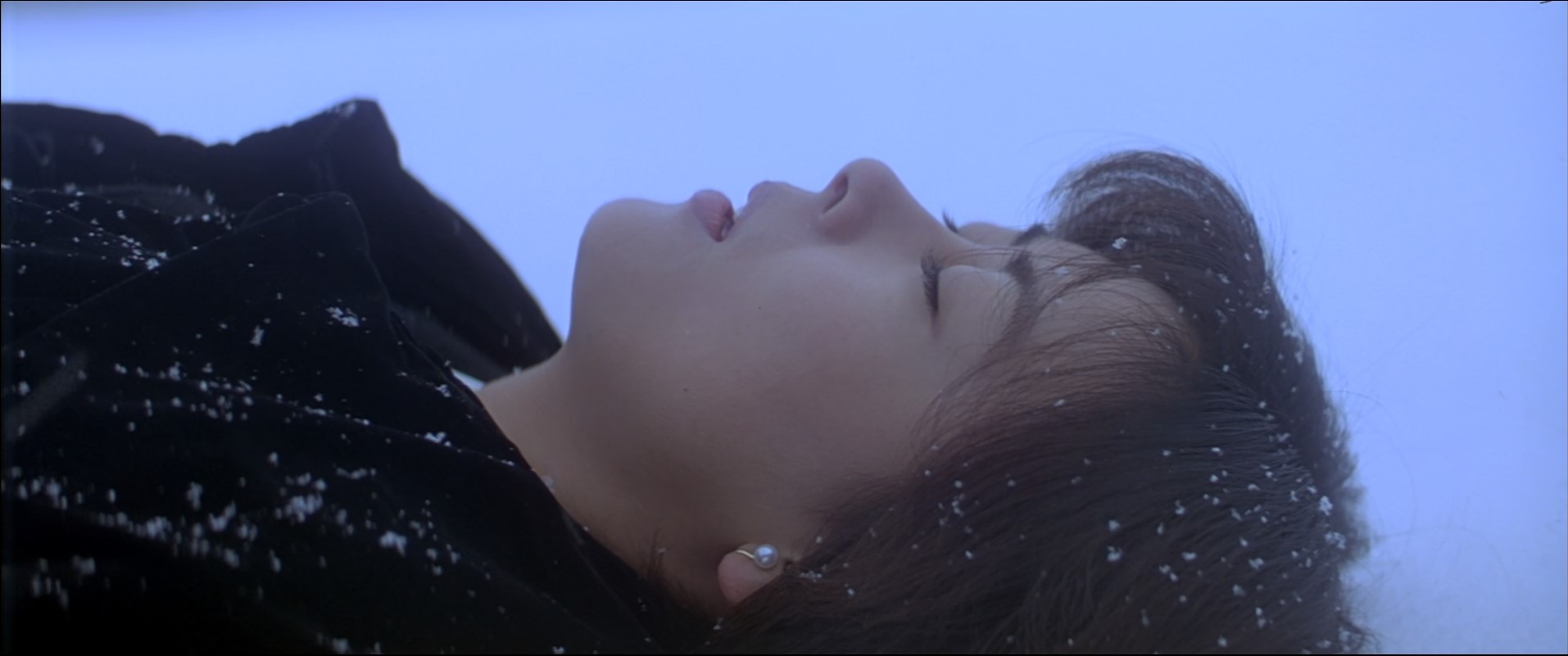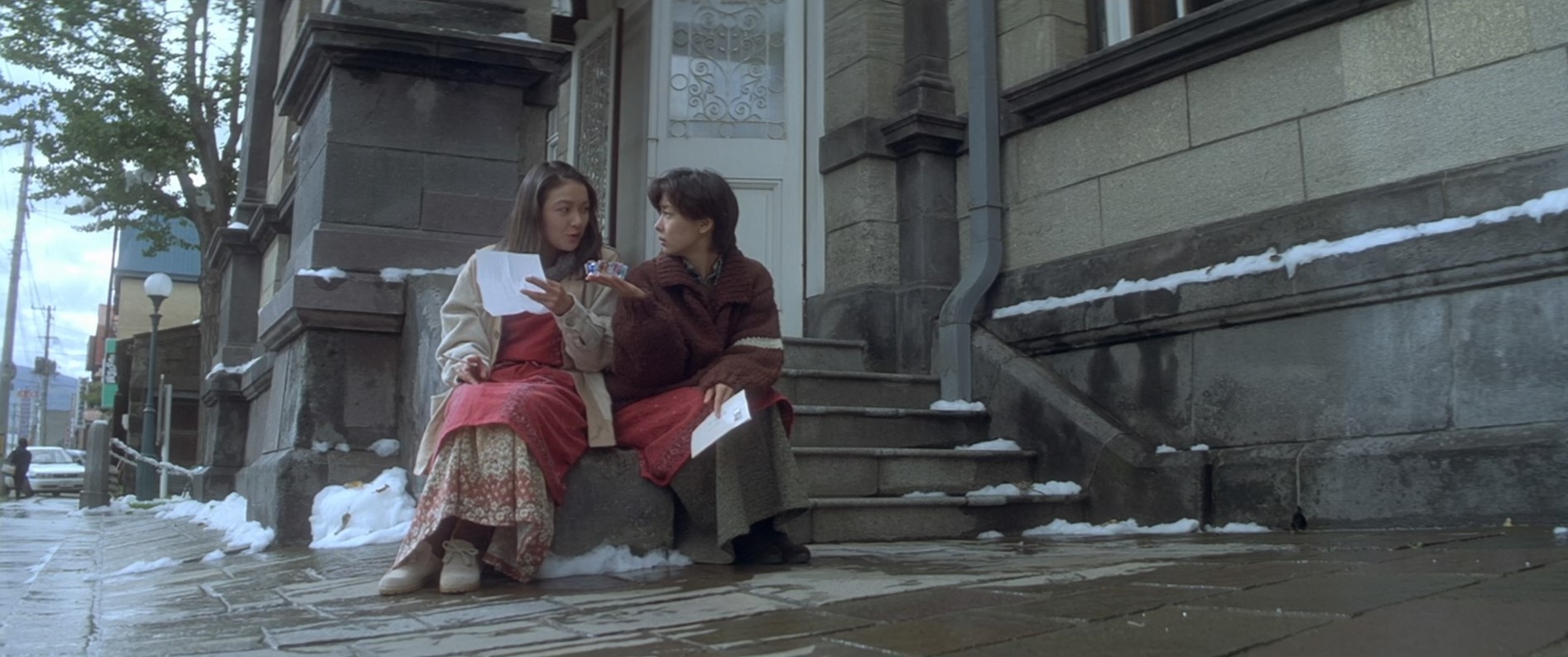This article analyzes the narrative of the film Love Letter based on Vladimir Propp’s character function theory, and explores how the main characters overcome the bondage of their past memories through letters to each other and return to their daily lives.
Introduction
We’re often asked questions like this in our lives. “What’s your favorite movie?” It’s a question I get asked quite often, especially since my major is somewhat related to film. Whenever I’m asked this question, I always hesitate, because it’s hard to pick just one or two favorite movies. Although I don’t have a huge interest in movies now, at one point I was passionate enough about them to want to work in a movie-related job, and I tried to watch as many movies as I could. All of the movies I’ve seen that have left a lasting impression on me are from this period.
One of these many films was 1995’s Love Letter, directed by Shunji Iwai. I was first introduced to this film in 1998 while taking an introductory film class. I was so interested in movies at the time that I borrowed copies from my seniors to attend the class. One day during the class, they screened this film, and knowing very little about Japanese cinema, I watched it with high expectations. And it did not disappoint. The visuals, the story, and the music all felt like they were seeping into my heart. I think it took me a few days to get out of this movie because I prefer movies that gently seep into me rather than intense, bombastic ones. Moreover, my relationship with the movie didn’t end there. I was reintroduced to the movie when the place I worked at for a while before enlisting in the Army produced a VCD of the movie, and the cable station I worked at last year bought the rights to the movie so I could watch it occasionally on my work monitor. So the movie has been around me for nearly a decade. I’ve probably watched it from start to finish more than 10 times now. But while most movies lose their impact after a few viewings, this one strangely touches my heart every time I watch it. That’s why I love it so much.
Since I’ve seen this movie so many times, I’ve seen it differently each time. Sometimes I focus on the visuals, and sometimes I focus on the characters. Even though I don’t have a lot of movie knowledge, it’s quite interesting to analyze a movie from a different perspective. However, I realized through this semester’s class that my analysis so far has been mostly limited to analyzing images and themes because I have no knowledge of narrative. The discussion of narrative in class was quite old, but new to me, as I had only been interested in the image aspect of the film, so in this essay I will analyze the film in terms of narrative.
This article will start with a brief introduction to the film, summarize the plot, and outline Vladimir Propp’s theory of character function, which will be the tool for this analysis. We will then analyze the film based on this theory and use it to gain a deeper understanding of the film.
About Love Letter
Director: Shunji Iwai (岩井俊二)
Starring: Miho Nakayama (中山美穂), Etsushi Toyokawa (豊川悦司)
Production: 1995, Fuji TV, color, 117 min.
As if the world of genuine manga had been translated to the screen, Shunji Iwai’s feature debut, LOVELETTER, has been enthusiastically embraced by the next generation since its release in 1995. A stunning visual journey through the memories of a man through a letter that is mistakenly addressed to the wrong person, this is the second film by the popular Japanese director, who has been praised for “perfectly combining the everyday themes of memory and love with beautiful visuals and music”.

The plot of “Love Letter
Hiroko Watanabe (Hiroko) wakes up on a white, snowy hill and heads to the funeral of her fiancé, Itsuki Fujii (Itsuki). When Hiroko arrives at his home after the funeral, she sees his junior high school yearbook and writes a note of sympathy to the now-defunct address listed in the yearbook, and unexpectedly receives a reply. She thinks it’s a letter from heaven, and they continue to exchange letters, but when Shigeru Akiba (hereafter Akiba) reveals that the letter is from another Fujii Itsuki (hereafter Itsuki), who shares the same name as her fiancé, Hiroko’s heart breaks again.
At Akiba’s urging, Hiroko visits Otaru, where Itsuki lives, and tries to meet him, but is unable to, and returns to Kobe, leaving a letter apologizing for her mistake. When Itsuki (F) reads the letter, she writes back to Hiroko that Itsuki (M) used to be her classmate.

Hiroko and Itsuki become pen pals, and Hiroko asks Itsuki to teach her about the man she remembers through a series of letters. As the letters go back and forth, Itsuki’s memories convince Hiroko that the reason Itsuki liked her is because she looks like Itsuki. Hiroko becomes even more enamored with Itsuki’s memories, which she had forgotten.
Eventually, Hiroko is encouraged by Akiba to visit the mountain where Itsuki was stranded, and there she is able to release all of the resentment she has been harboring. On the other hand, Itsuki (F) is near death from a bad cold and realizes her crush on Itsuki (M), which she hadn’t remembered until now.
Hiroko uses this event to clear her mind about Itsuki, and returns all the letters she has received to Itsuki. One day, when Itsuki is well enough to return to her normal life, she realizes her feelings for him through a portrait of herself drawn on the book card of the last book Itsuki gave her, brought to her by the junior high school students she attended.
Overall narrative progression structure
The narrative of the movie begins with Hiroko. The loss of her fiancé, Itsuki, causes a great sense of absence in Hiroko. This feeling of absence causes Hiroko to miss him and send a letter to a place where no one lives, which is the starting point for Hiroko. In this process, Itsuki’s mother acts as a dispatcher.
At the same time as Hiroko’s departure, we are introduced to another protagonist, Itsuki (female). After receiving Hiroko’s letter, Itsuki (F) becomes uneasy and begins a series of letters back and forth with Hiroko. From Hiroko’s perspective, Itsuki is fulfilling her first function as a donor, and Hiroko responds by writing back. Hiroko tries to forget the loss of Itsuki (M) by doing this, but Akiba, her assistant, points out that her judgment is wrong and tries to bring her back to reality. It is out of love that Akiba accompanies Hiroko to Otaru, where Itsuki lives.
At this point, Itsuki’s narrative doesn’t make much progress. At first, her only function is to talk about her father’s death in a conversation in the car on the way to the hospital. However, through her dreams in the hospital, Itsuki recalls memories from her junior high school days that she has forgotten, and she feels the absence of her memories and sets out to recover them.
Subsequently, the letter that Hiroko writes in front of Itsuki’s (F) house in response to the protagonist’s reaction becomes the first function of the giver to Itsuki (F), and the letter that Itsuki (F) sends to Hiroko in response to the protagonist’s reaction, stating that she knows Itsuki (M), becomes a magical agent for Hiroko. Likewise, Hiroko’s letter becomes a magical agent for Itsuki (F). Through this exchange of letters, Hiroko and Itsuki are transported back in time to their middle school days. This process is a very important part of the movie and serves as the foundation for their struggle.
Shortly after her trip to Otaru, Hiroko begins to suspect that the reason Itsuki (M) liked her is because she looks like Itsuki (W), and her letters with Itsuki (W) reinforce this conviction. This is an important moment for Hiroko to break free of her bonds with Itsuki (M). Itsuki, on the other hand, gradually recovers his repressed memories through his correspondence with Hiroko, and begins to realize that he had a crush on her.
Through the process of spatial mobility, Hiroko is encouraged by Akiba to go to the scene of Itsuki’s accident. In this struggle, Hiroko, with Akiba’s help, eventually arrives at the mountain hut where Itsuki was stranded. While visiting her alma mater, Itsuki (F) also hears of Itsuki’s (M) death with the help of a gift and revives her long-buried memories of her father’s death. The battle with this memory is visually represented by the worsening of a cold, and with the help of her family, Itsuki (F) eventually wins the struggle.
After the victory, they resolve their conflict in one of the film’s most famous scenes, scene 78. Hiroko shouts out what she wants to say to Itsuki in the snowy field, breaking the bonds of her memories of him. At the same time, Itsuki (F) says the same thing to Hiroko from his hospital bed and regains the memories he has been suppressing.
Afterward, Hiroko returns all the letters to Itsuki and returns to her normal life. Itsuki also returns to her life and returns home. However, Hiroko sends one last letter, leaving Itsuki with a difficult task. A few days later, Itsuki learns from the back of a library card brought to her by her junior high school classmates that Itsuki had a crush on her.

Understanding “Love Letter” through analysis
As we have seen above, the two main characters of the movie, Hiroko and Itsuki (female), have in common that they are trying to overcome the bondage of their memories. Hiroko is haunted by the memory of her deceased husband, while Itsuki is haunted by her father’s death and the events surrounding it. They act as each other’s witnesses, and through the common shamanic agent of letters, they are able to overcome the bonds of memory.
Conclusion
In this chapter, we analyzed the narrative of the film Love Letter based on Proff’s character function theory. At first, I had doubts about whether the narrative of the movie could fit into Proff’s functional theory, but I was able to find its own meaning while trying to analyze it. It was a great experience to be able to analyze a familiar movie from a new perspective, and it reminded me of the fascination of narratology.
However, despite the length of time I spent on this analysis, I am disappointed that I did not have a deep understanding of the morphology of prose. It would have been a richer analysis if other categories of prose had been explored, and I regret that this was not done.